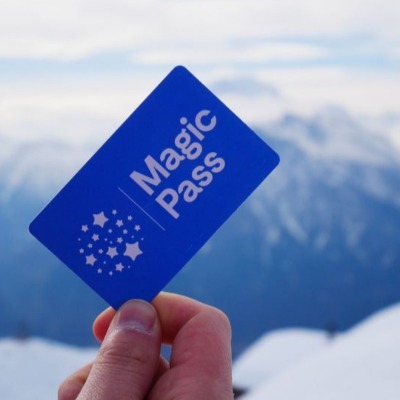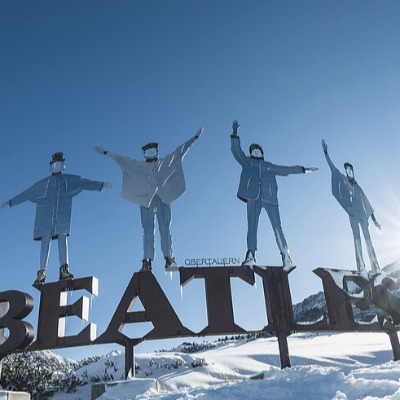International Report On Snow & Mountain Tourism For 2021 Shows Covid Hit Hard

The 2021 International Report on Snow & Mountain Tourism has just been unveiled during an online press conference held on April 13th, 2021, in cooperation with the organisers of Mountain Planet International Exhibition. This 13th edition of the report presents winter 2019/20, a season that has been brutally interrupted by the outbreak of covid-19 all over the world. This is of course reflected in the numbers.
After 2018/19 ski season was reported as the best season of the current millennium, the rapid spread of an unknown virus has unfortunately turned the 2019/20 into the worst season of the current millennium.
The brutal apparition of the virus first put the largest populated country of the world into strong confinement, resulting in the closure of all ski resorts in China by beginning of February 2020. As incredible as it was, within one month, this virus spread over most of the world and resulted in a generalised lockdown. Thus, most of the ski resorts in the world had to close by mid-March 2020. The level and duration of the lockdown varied from one country to the other. Japan, Iceland and partially Sweden were the only ski nations to carry on skiing through the pandemic. The governments of these countries have not seen a need to shut down ski centres. Some Chinese ski areas managed to reopen by the end of March 2020 thanks to the strict control over the pandemic.
Southern hemisphere season was also diversely impacted, with some opening delays and closures. The 2020 ski season began in Lesotho in early June, and New Zealand’s season started a few weeks later, slightly delayed, but with few restrictions. Australia also managed a ski season from June to October, but only in some regions. In South America, strict restrictions were in place for much of the winter but a handful of resorts managed to open with very limited access from mid-August to, in most cases, mid-September, or even mid-October. South Africa’s sole ski area was not able to open in 2020 due to pandemic restrictions in the country.
The global impact of covid-19 outbreak over 2019/20 winter season attendance translated into a decrease of 18% in ski resorts visitation over the globe. The highest impact could be seen in Asia & Pacific, where the decline reached 31%. In all other regions of the planet, the impact was around 15%. This can easily be explained as the pandemic first impacted Asian countries in January / February 2020, before spreading in other regions in March 2020. Then the closing pattern has been pretty similar from one country to another.
Despite this dark background, some positive highlights however deserve to be pointed out for the 2019/20 winter.
- The season began very well in most resorts of the Alps and intermediate figures were at the highest. It is very peculiar, because winter 2019/20 has been considered as the warmer since systematic temperature records started by meteosuisse, for instance. In spite of this, attendance was clearly over former years’ average until end of February. Attendance during the first part of the season was also excellent in other regions of the world, such as in Quebec.
- The spread of multi-resorts season passes and the wider adoption of dynamic pricing continued to shape some transformation of the traditional tickets sale business model and increase the reliability of the revenue base.
- Despite the general closure that happened in most places in the course of March 2020 due to the coronavirus outbreak, a renewed interest for ski learning has been observed in several places. The empty bottom of the slopes, surrounded by closed lifts, turned into a nursery zone for beginners. Many made a first trial or re-trial, even in the absence of any functioning uphill facilities.
- Despite the testing competition could not be held in February 2020, the Olympic alpine skiing venue has been completed in Yanqing. The perspective of 2022 Winter Olympics hopefully heralds of brighter years for the ski industry.
Currently, everybody also already knows that winter 2020/21 will even be worse in many countries. However, the industry remains dedicated to delivering extraordinary experiences to the skiers and will be trying even harder over the next years.
- Coverage: There are currently 68 countries in the world that offer equipped outdoor ski areas covered with snow. Even if snowfields are much more numerous, about 2’000 ski resorts have been identified worldwide. Besides the major ski destinations in terms of skier visits, there are a number of other, smaller destinations, where skiing has been an industry for a long time, or is currently developing. The most obvious emerging destinations are Eastern Europe and China, but there are a number of other small players spread out across the globe: Cyprus, Greece, India, Iran, Israel, Lebanon, Lesotho, Morocco, New Zealand, Pakistan, South Africa, Turkey and many more.
- Laurent Vanat: Besides his personal involvement in the sector of snow & mountain tourism, Laurent Vanat runs his own consulting firm specialized in business planning and management, Laurent Vanat Consulting Ltd. Laurent Vanat has been invited to present his report at various international meetings, including the OITAF Congress in Rio, those of the WTO in Andorra, Almaty, Tbilisi and Ulsan, Asia Pacific Snow Conference – ALPITEC/ISPO in Beijing, Mountain Planet in Grenoble, IMTA annual conference in Guiyang, various meetings of the FIS and the meetings of Grand Ski in Chambéry, among others.
Access to the full report is currently limited to its contributors and the supporters of its crowdfunding campaign. Major figures were presented during the press conference, which you can access for replay with following link: https://www.youtube.com/watch?v=EL2W5ZK7_6U













